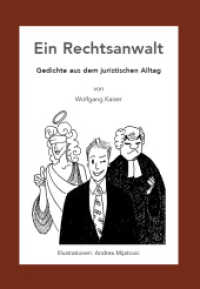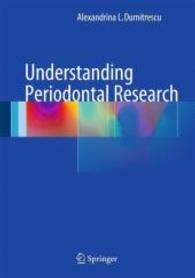Full Description
This book considers the null-subject phenomenon, whereby some languages lack an overtly realized referential subject in specific contexts. In generative syntax-the approach adopted in this volume-the phenomenon has traditionally been explained in terms of a 'pro-drop' parameter with associated cluster properties; more recently, however, it has become clear that pro-drop phenomena do not always correlate with all the initially predicted cluster properties.
This volume returns to the centre of the debate surrounding the empirical phenomena associated with null subjects. Experts in the field explore the cluster properties associated with pro-drop; the types of null category involved in null-subject phenomena and their identification; and the typology of null-subject languages, with a special focus on partial null-subject languages. Chapters include both novel empirical data and new theoretical analyses covering the major approaches to null subjects in generative grammar. A wide range of languages are examined, ranging from the most commonly studied in research into null subjects, such as Finnish and Italian, to lesser-studied languages such as Vietnamese and Polish, minority languages such as Cimbrian and Kashubian, and historical varieties such as Old French and Old High German. The research presented also contributes to the understanding of other key syntactic phenomena, such as the nature of control, the role of information structure and semantics in syntax, the mechanisms of language change, and the formalization of language variation.
The breadth and depth of the volume will make it a valuable resource not only for generative syntacticians, but also for all those working in the fields of historical linguistics, typology, comparative grammar, semantics, and theoretical and descriptive linguistics more generally.
Contents
Acknowledgements
List of abbreviations
Notes on contributors
1: Federica Cognola and Jan Casalicchio: On the null-subject phenomenon: An example of successful linguistic research
Part I: Properties of null-subject languages
2: Ciro Greco, Trang Phan, and Liliane Haegeman: On nó, an optional expletive in Vietnamese
3: Ermenegildo Bidese and Alessandra Tomaselli: Developing pro-drop: the case of Cimbrian
4: Michael Zimmermann: Null subjects, expletives, and the status of Medieval French
5: Theresa Biberauer: Pro-drop and emergent parameter hierarchies
Part II: Types of null subjects and identification
Part IIa: Null subjects and control theory
6: Michelle Sheehan: On the difference between exhaustive and partial control
7: Nerea Madariaga: Diachronic change and the nature of pronominal null subjects: The case of Russian
8: Verner Egerland: On the interpretation of gerundival null subjects and the theory of control
Part IIb: Null subjects between discourse and agreement
9: Mara Frascarelli: The interpretation of pro in consistent and partial null subject languages: A comparative interface analysis
10: Marta Ruda: Syntactic representation of null arguments: [NP e] as [nP n] (Minimally)
11: Helmut Weiß and Anna Volodina: Referential null subjects in German: Dialects and diachronic continuity
12: Henrik Rosenkvist: Null subjects and distinct agreement in Modern Germanic
References
Index







